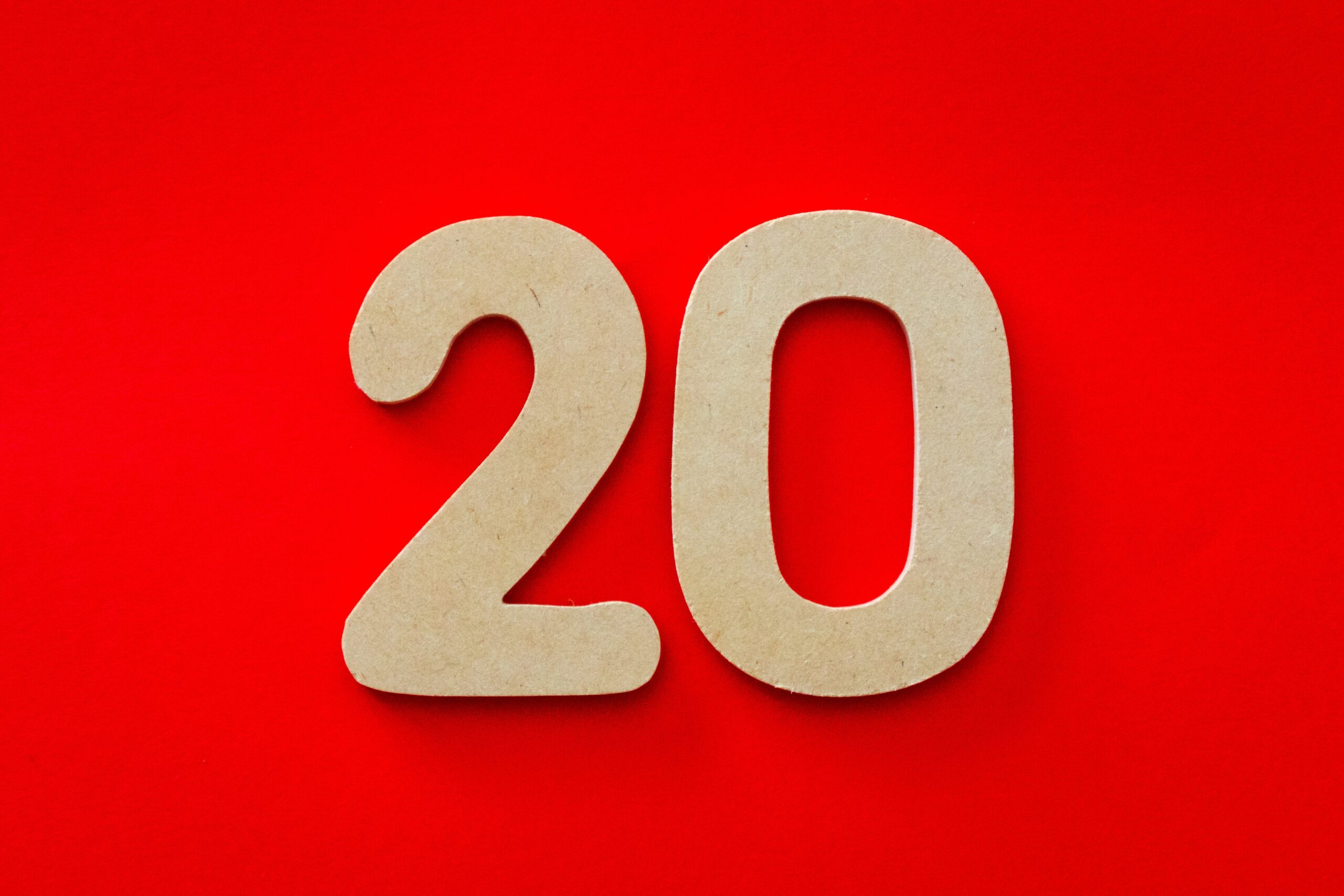I was only going to be a personal trainer until I found something better. A couple of months until I found a teaching job, and then personal training would be a thing of the past.
That was the plan. The plan never materialized.
It’s crazy to think about, but this past May marked my 20th year as a full-time personal trainer. It got me thinking, 20 years is a pretty long time to be doing something. And as a result, I’ve learned a few lessons along the way that I thought I’d share with you.
In no particular order, here are the biggest 20 lessons I’ve learned over the last 20 years as a personal trainer and strength and conditioning coach:
- Not knowing what I didn’t know. 20 years ago I knew more about training than at any other point in my career…or so I thought. It’s funny, the longer I’m in this, the more questions I have. I don’t have all the answers and realize I never will.
- Believing cardio was the end all be all. For many years I was a big-time runner, and yes, it served me well for a time. Until it didn’t. I’m not saying long-duration aerobic exercise isn’t important because it is. I’ve just come to realize there are safer, more efficient ways to get and stay fit as opposed to running an hour or more per day.
- The importance of strength training. I’m convinced it doesn’t matter what stage of life someone is in, one of the best things they can do for their overall health is to build and maintain muscle. Simply put muscle = metabolic currency. The more of it you have, the easier time you’ll have looking, feeling, and being physically fit, and disease free.
- Interval training saves you time. Depending on the length of your intervals, this could check your cardio box as well. Most people do “cardio” to lose weight and get rid of fat; and might spend 30, 45, or 60 minutes per day doing it. In reality, the same thing can be accomplished with 10-20 minutes of a good interval training program once or twice per week.
- Sprinting is awesome. In essence, sprinting is interval training – just with very brief work and long recovery periods. You’d be amazed at what sprinting all out for 10-15 seconds can do for your metabolism and energy level. I wouldn’t recommend just going out and sprinting as hard as you can cold turkey. That would be a pretty good recipe for getting injured. It’s something that requires slow progressions and working up to. However, you could hop on an Airdyne bike or use some battling ropes, etc. The point is, just move your whole body as fast as you can.
- Doing too much too soon. I did this often. And the result? More injuries than I can count. Proper progression is important, and the older you get, the more important it becomes.
- Not listening to my body. This often pairs with #6. During my heavy running days, I can’t tell you how many times my body gave me a signal that something wasn’t right. Often I’d ignore it, get hurt, and have to miss training time. Had I backed off and respected what my body was telling me, I’d have been injured less and had a better running career.
- There’s a cost to everything. Some of us are better suited for certain exercises and activities than others. If you’re unaware of what these are and do them too often for too long, at some point you’ll probably have some orthopedic problem.
- Stuff wears out. Under the best of circumstances, joints will slowly wear down over time. It’s probably not the best idea to further accelerate the process by participating in activities or exercises where you’re unable to get your joints into an acceptable position. See above.
- It’s okay to let an exercise go. For some reason, the incline bench press has never worked for me. I’d get an ache in my neck just about every time. A few years ago, that ache became major pain…for two and half years before it subsided. I’ll never incline bench press again.
- You don’t need 100’s of different exercises. 20 years ago I used a ton of different exercises. Today I use a fraction of that amount. There are 7 primary movement patterns that need to be trained, and then it just comes down to choosing the appropriate exercise for the individual to suit the pattern. And over time, it became clear to me that certain exercises seemed to work better for most people.
- Mobility trumps everything else. Depending on your age, this one might be tempting to blow off. However, at some point during your life, being able to get up and down from the floor will become incredibly important to you.
- Movement quality is suffering across all age groups. The very first thing I do with a new client is to put them through a functional movement screen. If you can’t get your joints into the correct positions, your movement quality will suffer. When your movement quality suffers, compensations take hold – which eventually place undue stress on your muscles, joints, bones, and/or connective tissue. Pain and injury are often the result. See #9. There are a host of reasons for this, but too much sitting would be a good place to start.
- Your hamstrings might not be “tight”. I see this one fairly often. Yes, they might feel tight to you, but this doesn’t necessarily indicate a flexibility or mobility problem. Sometimes, it’s a stability issue. If you keep stretching and it never seems to get better, the latter is likely true.
- Working out vs. training. Working out is exercising for the sake of moving one’s body in the absence of a clearly defined plan. This isn’t necessarily a bad thing. Training is exercising with the purpose of achieving an objective requiring systematic planning and implantation that is measurable. It’s continually adapted over time to achieve some end result.
- Entertainment vs. results. When I first started training clients my biggest fear was that would get bored. It’s why I had a playbook of 300+ exercises. While I had lots of exercises, it would be fair to say I didn’t get lots of results. I always strive to make training “fun” for the individual but I’ve learned that most would trade novelty and fun for the results they seek in a heartbeat.
- You can’t out-train a poor diet. I’ve said this many times before and I’ll continue to keep saying it because it’s that important. You can train as hard and as much as you’d like, but if you choose not to eat like an adult (ample amounts of protein, essential fats, vegetables, and fruit, enough carbohydrates to suit your energy level, while keeping processed foods to a minimum) you will continue to struggle with body composition.
- Don’t underestimate the value of walking. I would have laughed at this 20 years ago. Today I absolutely love walking. It just makes me feel good on multiple levels, and it seems to do the same for those I coach as well.
- The minimal effective dose. I used to think the longer and more grueling a workout was the better. This must have been a byproduct of my collegiate distance running days. And back then, there might have been some truth to this. Over time, I’ve become laser-focused on determining the minimal amount required to get the result I’m looking for. In other words, why spend 60 minutes if I can do it under 30? See #’s 8 and 9 as to why this is important.
- Rest and Recovery. I can and still do get after it with my training. However, as I get older, it’s often sobering to realize that I can’t go as hard and as often as I used to. It’s become quite obvious of my need to put more space between hard workouts, ease up on the intensity, and/or reduce the volume at times. Less is more if you will. When I’m not seeing the results I should, inadequate rest and recovery is almost always the culprit. Yes, training hard is an essential requirement to get results, but it’s easy to forget that allowing the body the time it needs to rest and repair is just as important. See #18.
Honestly, I had a hard time stopping at just 20. I guess I’ve made many mistakes over the years! If you enjoyed this or found it useful, then stay tuned. More is on the way.

